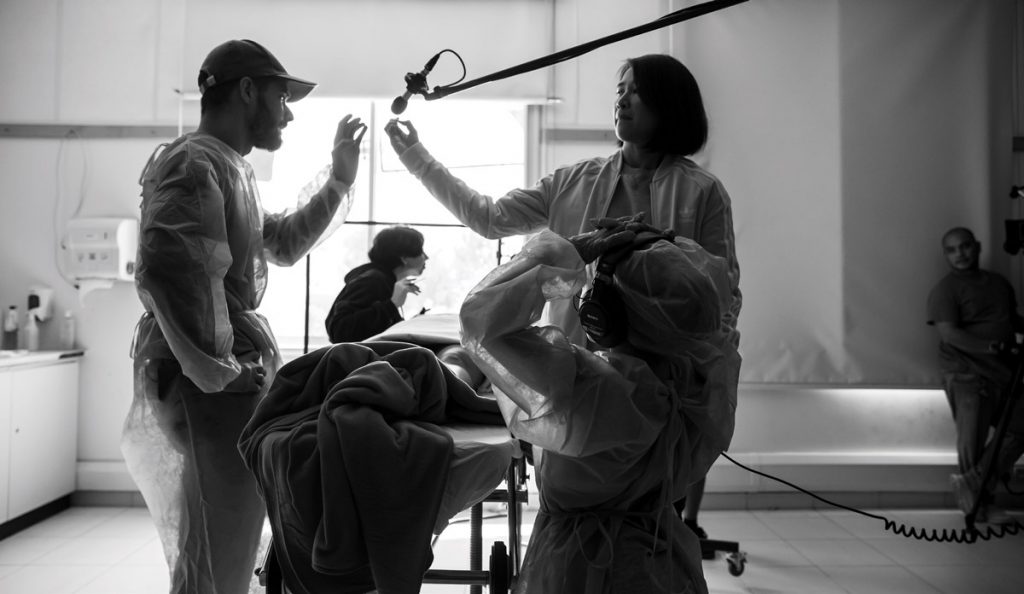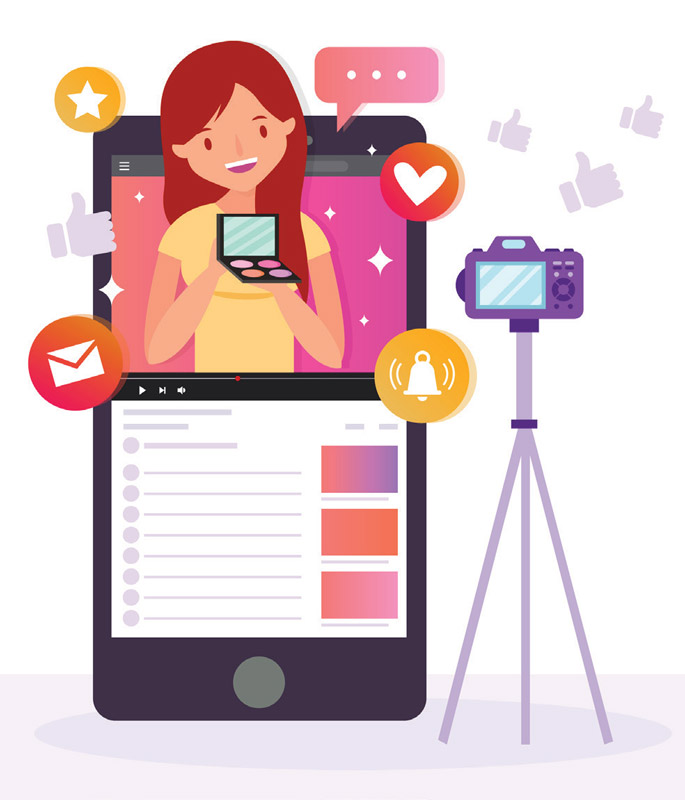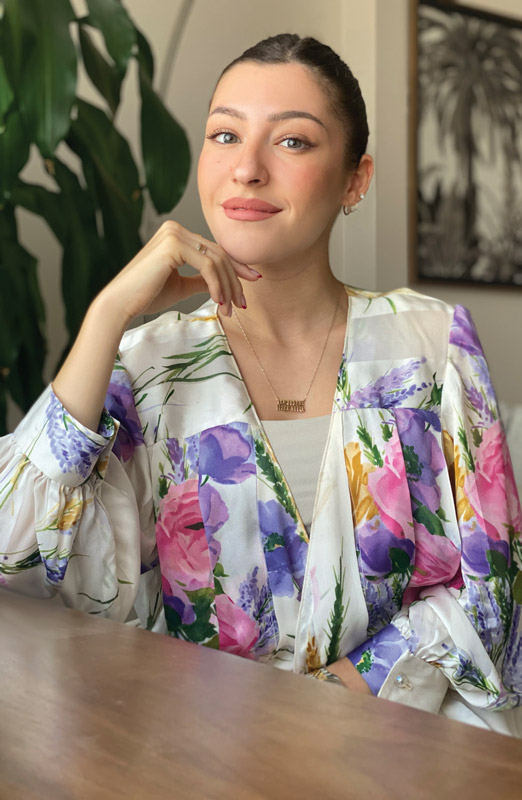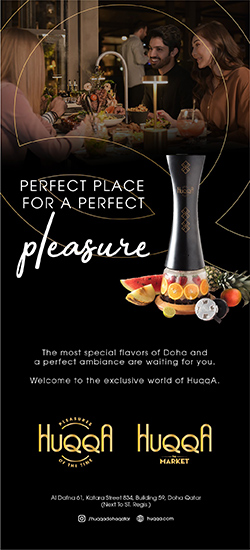READY FOR THIS TRANSFORMATION?

Our world today is undeniably digital. New technologies from social media and GPS systems to artificial intelligence and digital twins. If you’re feeling queasy at the speed of change, hold tight. It’s only going to get faster
From crisis comes innovation and opportunity. This is no different. When Covid-19 struck, it forced societal changes around the globe. In response, businesses and schools alike began to look for ways to continue their operations remotely, thanks to the Internet. They turned to technology, collaboration platforms and video conferencing to remain engaged with their colleagues, clients, and students while working from home offices.
In just 18 months, the pandemic has brought about years of change in the way the world operates. According to a survey by McKinsey & Company, digitisation in companies, sectors and on individual levels has been accelerated by three to four years.
The Internet moves at a rapid pace with new trends emerging daily, often led by celebrity culture, media, brands and influencers. The latest ‘in’ technology is talked about and in no time spread nationwide or globally. Everything’s a click away.
Students have finally been able to adapt to the new way of blended learning, filmmakers are keeping an eye on OTT (over the top) platforms to release their motion pictures and reach a wider audience. There are those who have taken over social media as influencers and have opted for this as their primary means of making a living. Entrepreneurs have successfully launched online experiences for consumers there are also authors who, rather than rely only on print, have shifted their focus to digital copies.
This month’s cover story is dedicated to everything digital and how different sectors have been affected by digital transformation for good or, sometimes, not so good…
AFTER COVID, WILL DIGITAL LEARNING BE THE NEW NORMAL?
Back in April 2020, schools and universities, not only in Qatar but worldwide, moved almost completely online in response to the pandemic, with classes still being taught face-to-face every other day for small groups of students. This teaching experiment proved to be successful. Where many schools were not entirely equipped with the technology for such a change, the lecturers were given orientation to become part-time producers, creating pre-recorded sessions or taking some on Zoom live.
How the education sector responded to the pandemic is worthy of appreciation. Now, even with everything, hopefully, back to normal soon, there are schools envisioning a future in which big lecture rooms with several hundred seats are progressively replaced by a more flexible education system, which takes the best of online learning but focuses on interactive experiences tailored to individual students’ needs.
Shagufta Bakali, a seasoned educationist of 25 years and CEO of The Next Generation School, gives her perspective on blended learning and what really is next.
“Change is crucial for growth and improvement, and I believe that digitisation is that one crucial change that has affected the education sector at large. From the changes in traditional learning, where the teachers would work from the book with little to no focus on independent learning, research or even focus on the child’s communication skills, digitisation has allowed students to branch out,” says Shagufta.
Digitisation can play a role in keeping students engaged with visual representations of concepts and activities. “Studies have shown that the human attention span is decreasing, so to keep learning educators need to find ways to keep students engaged, this is where digitisation plays a huge role. It allows teachers and educators to show students visual representations of concepts in a fun manner. This in turn allows students to retain knowledge and is an effective way for educators to teach.”
According to Shagufta, other than visual aids, digitisation has allowed educators to employ research-based learning and focus on the students’ written and spoken communication skills by encouraging them to use a variety of digital mediums to complete assignments. “This not only makes learning fun, but also helps in retention of information learned,” she adds.
The blended learning approach during the pandemic has allowed students and teachers to continue from the safety of their homes. But what’s the downside? Shagufta explains: “In a classroom setting, the educator has control over the classroom. They are able to regulate the learning pace and to keep the students engaged with various in-class activities. However, with the addition of technology both students and teachers are required to step out of their comfort zones.”
Is a blended learning approach helping students absorb and retain more? “It makes learning a bit more relaxed as students not only get more time to complete the assigned tasks but the incorporation of visual aids during classes makes it more fun and effective. It has also allowed both students and teachers to be familiar with technology in a very short time,” explains Shagufta.
Digital and remote learning are expanding the horizons of education further then we could have imagined. They have opened doors to millions of possibilities. Education is no longer confined to the walls of a classroom but can be offered over any digital platform. “Even before blended learning became the need of the hour, remote education was still there. Albeit it was not the norm or a prevalent mode of teaching, it allowed educators to reach students far and wide. YouTube played a crucial role in ‘normalising’ it by hosting a variety of educational videos, but now, with this new mode of teaching, an educator in Qatar could be teaching a student in Kenya with the same ease as if the student were here.”
There’s steep growth expected in the graph of digital education. According to Shagufta digital or e-learning will not end when the pandemic ends. There’s more to it. “From now on, most probably, digital education will be the core of teaching and learning moving forward.”
THE CHANGE IN STREAMING HABITS AND THE NARRATIVE OF STORYTELLING

Over the decades, from group-watching films with the entire neighbourhood to owning a television set of your own, the introduction of VHS and DVD and now a library of options a button away — viewing habits have demonstrably changed. The future of OTT platforms looks promising. As Covid impacted lifestyles worldwide in more ways than one, we witnessed a rise in popularity of online streaming platforms. Staying mostly at home, the weekend binge spread across the entire week and the hours spent have increased to a point where it is hard to imagine that this behaviour will reverse once normalcy returns. Dimitri Yuri, a Brazilian screenwriter and director, based in Doha, talks about how filmmaking and the entertainment industry have been affected by heavy digitisation.
Talking about the rise of online streaming platforms, Yuri says: “I think it has now changed just about every aspect of filmmaking, from cinema to commercials. There’s easier accessibility for anyone to film and showcase their work, but at the same time we can notice a bit of an oversaturation of content, making it harder and harder to stand out,” he says. “This saturation also makes it harder to advertise your content, which is why we see less and less mid-range budget films getting a theatrical release. It’s either an indie or a blockbuster tentpole, but not a lot in between. However, streaming services are still able to produce the kind of content that we were used to before the 2010s.”
He adds that there hasn’t been a sweeping shift of content released on online streaming platforms. “Even before the pandemic it was all moving towards where we are right now. However, Covid-19 accelerated the process. The inability of people to go out to experience content (movie theatres) forced companies to focus a lot more on what can be seen at home: streaming platforms, social media, and even online film festivals,” says Yuri.
Many filmmakers have turned to the streaming platforms for the release of their films and shows, considerably reducing the time to release. But is this affecting the quality of the content? Yuri responds: “Good content will always be out there. What might give that impression is the number of things we have access to now. Before, in order to get a movie made and shown, there was a long process of approvals and financing required for the product to even come to existence. That’s still the case for the most part, but access to equipment and platforms to showcase your work has become a lot easier to find.”

According to Yuri, shows are shrinking their run-time of episodes and that might be the future. “Some people think VR is the future, but the current state and price of the technology is not ready to become mainstream. I personally feel we’re moving towards more short-form, episodic content. Many Netflix and Prime shows have drama episodes that are under 30 minutes long. This was not really possible before with TV schedules, et cetera” he says. “At one point we thought 3D was the next big thing, but now we realise its time has passed. The best way to figure out where it is gonna go is to simply wait for James Cameron to make a movie and earn a billion dollars worldwide.”
BEING A SOCIAL MEDIA INFLUENCER IS AFTER ALL WORTH IT
Over the past decade or so the rise and eventual pervasiveness of social media has seen the exclusivity and access warp and weft together. The rise of social media platforms, including Instagram, YouTube, Facebook and Twitter, which champion user-generated content, spurred the democratisation of brands and companies reaching out to more consumers than expected. These days, we find ourselves permanently connected via the apps, unconstrained by location or time.
Anas Abu Qamar, known as @triplefqatar on Instagram, flashes a decent number of 21.5k followers. He talks about how he started off and where he thinks social media influencer marketing is heading to. “I’ve been very passionate about online space. I’ve been working in the digital world for a decade now. Last year, when Covid happened, it gave me a new perspective. I resigned from my job and wanted to focus on my online presence. The first thing that a company is going to do before hiring me for a social media position is to look at my profile. So, I decided to create TripleFQatar. And due to my know-how of the online world, I knew that the content creation or influencer market here in Qatar for English speakers was dominated by women. So, I had a space.”
As the pandemic has caused many of us to shift out priorities, what we expect from an influencer is also changing. People are looking forward to more relatable, everyday content and lifestyle and that somehow leaves a responsibility on influencers to put forward their opinion more carefully and strategically.
The combination of trusted endorsement and accessible celebrity has allowed companies to target the consumers in a more tailored way. “If we are talking globally, there is more and more reliance on influencer marketing – and corporates are hiring full-time content creators to be able to address this new generation that does everything online,” says Anas.
Despite creating an advanced new model that has defined the digital era, the influencer industry is not without its problems. A saturation of social media marketing calls out many ‘social media stars’ to appear more authentic rather than alienating fans with heavily posed and paid posts. “If you are unreliable – eventually people will realise that,” says Anas. “People are getting smart at figuring out which advertisement is genuine and which is not – I always say, work online with only products you believe in.”
Everyone is joining the bandwagon of social media, but what’s the mantra to make it big? Anas explains: “The right time is now! If you believe in yourself, just dedicate the time and effort, but most people just want to be famous or successful rather than putting in the work. You have to be consistent and persistent; many people kick-off well but then they start feeling insecure about the amount of likes or views and simply stop”
“The mantra is consistency (keep going), creativity (be memorable), and finally – add value to the viewer, create the need to revisit your profile.”
Managing your social media presence is a job on its own. But is it really worth it? “It is mostly that you need to be on your phone for long hours and you sometimes forget to enjoy the moment or the world around you – and definitely you do develop an obsession about numbers [views, likes, shares, comments etc.]. You can rely on social media as a full-time job, but you also need to be aware that at some point you need to become independent from people and rely on financial gains from the platforms directly – that’s why many successful Instagrammers eventually end up on YouTube.”
According to Anas, Qatar’s social media landscape needs more faces. He has a word for aspiring social media influencers looking to make it big. “In Qatar more specifically – we need more faces, new faces – so this is a message to everyone who is passionate about it to get on it as soon as possible.”
ONLINE SHOPPING IS ON THE RISE
Worldwide, the social connection in the retail transaction matters a lot. With social distancing and physical spaces under restrictions, e-commerce is on the rise.
Opportunity has been one of the most important guiding sources of innovation. It’s only human to seek a solution when something stands in the way of our desire. With the pandemic putting a pause on our activities for a prolonged period, there’s something joyful about the simple task of even taking a walk. Browsing favourite stores seems a long way away but adding items to a cart and scrolling for hours is the new equivalent to examining yourself from every angle in the infinity of fitting room mirrors.

Valeria Mazzei, teen entrepreneur has been juggling between retail and online for the past 18 months. She started off with luxury bags made in Italy, which is a contrast to what she’s selling now. Although she was one of the first few entrepreneurs to launch an Instagram business in Qatar, unfortunately, at the time, people were still not really used to buying luxury goods off Instagram, which is why she shifted her offering from luxury bags to street wear.
Valeria started off with caps and patches, customising them at customers’ requests, and then ventured into sweaters, T-shirts, hoodies, embroidery and printing. In March 2020, when Covid took over the world, she established another brand, Venus Karma Beauty, which focused on vintage home décor. She started this venture in support of Italian artisan women who couldn’t do much during the pandemic and had financial constraints. Anything the artisan women could make at home; Valeria would ship it and sell it online in Qatar. It has been a huge success that grabbed people’s attention to the extent that Valeria managed to open a retail shop.
Talking about how social media helped Valeria says: “Social media has been extremely beneficial for the exponential growth of businesses — even just Instagram for selling and reaching out to more people. It doesn’t matter where you are, being digital allows you to interact with all the customers not only in Qatar but around the world.”
“You can create a connection with the customer, even if it’s a chat via Instagram. Shopping is a personal experience, so when you can assess the personality of the customer more conveniently and give advice based on it, this creates a better, stronger connection. It’s the empathetic way of treating the customers that is one of the most important aspects of building up connections and growing.”

For brands and entrepreneurs to take their offerings from instore to online or developing a hybrid model seems like a natural course of action. According to UN trade and development experts at UNCTAD, the e-commerce sector saw a ‘dramatic’ rise in its share of all retail sales, from 16% to 19% in 2020. “On a larger scale, online is more beneficial just because you can reach so many more people than just if you’re in a physical store,” says Valeria.
“We are all heading to a more digital world but on the other side I feel people at one point will turn around to seek a more empathic, personal, face-to-face experience again. Post pandemic people will be seeking out the physical touch of meeting people, feeling the fabric, the goods in the store. It’s something we have not been allowed to do for such a long period of time.”
So, it seems that in some areas, such as retail, digitisation still has some competition.



























